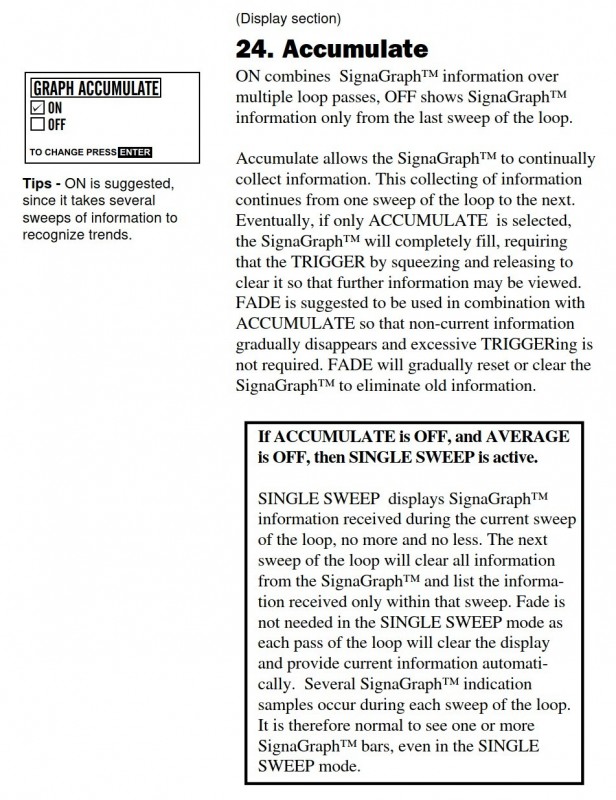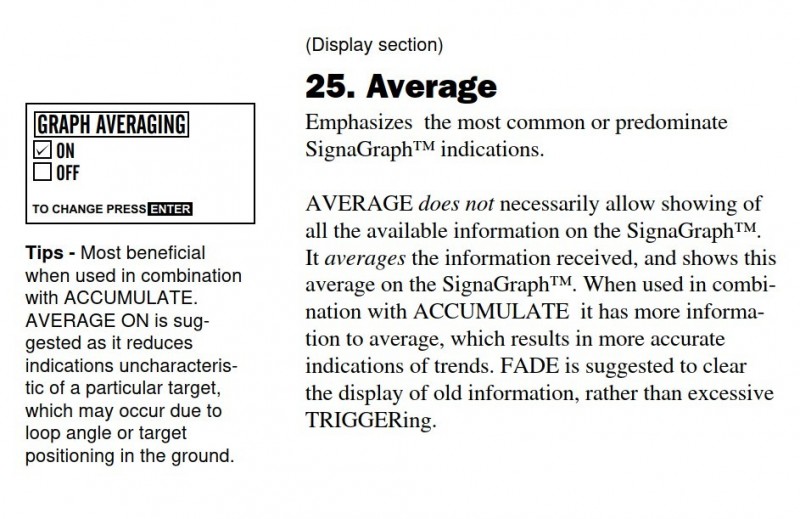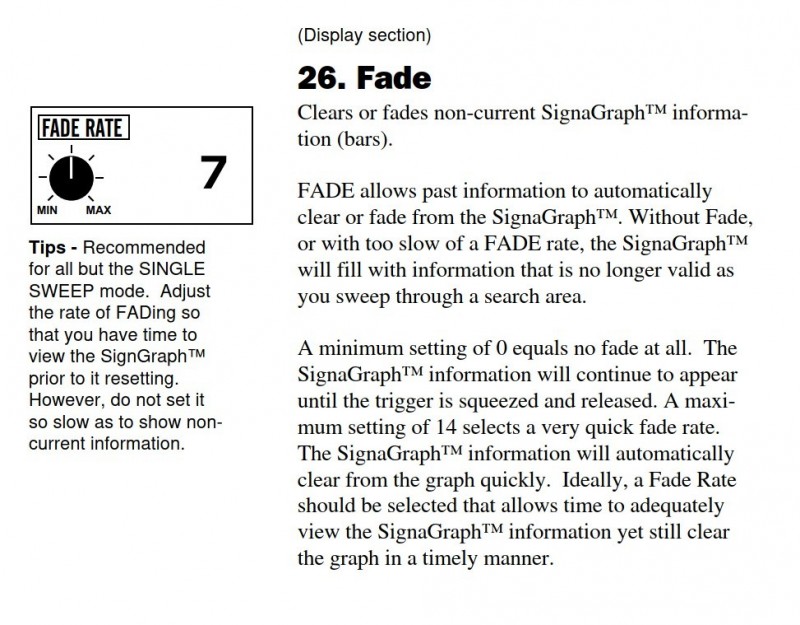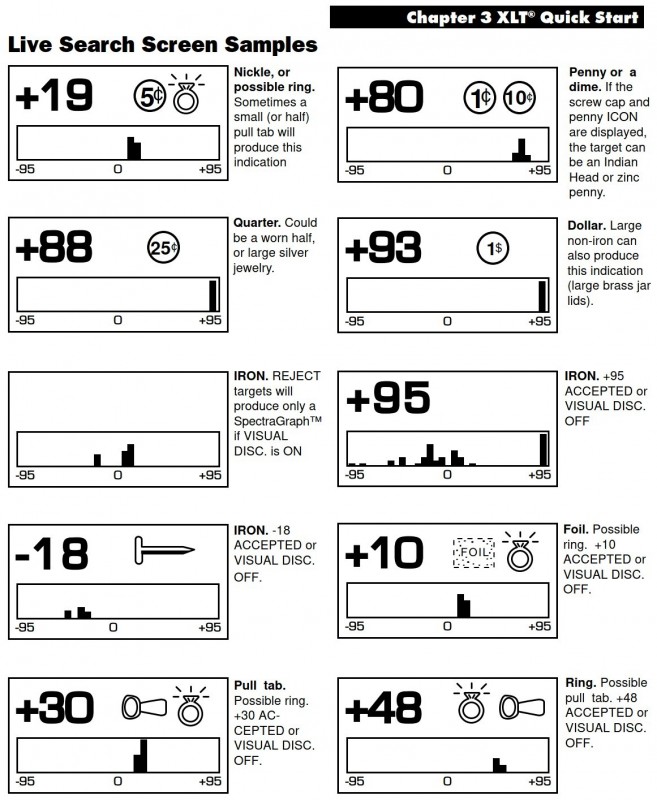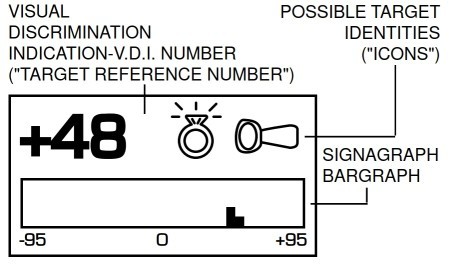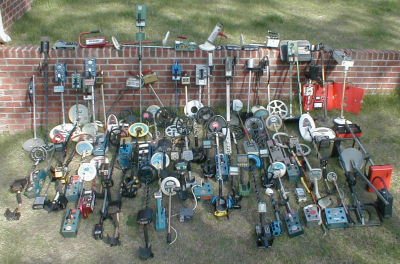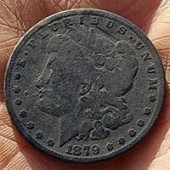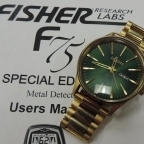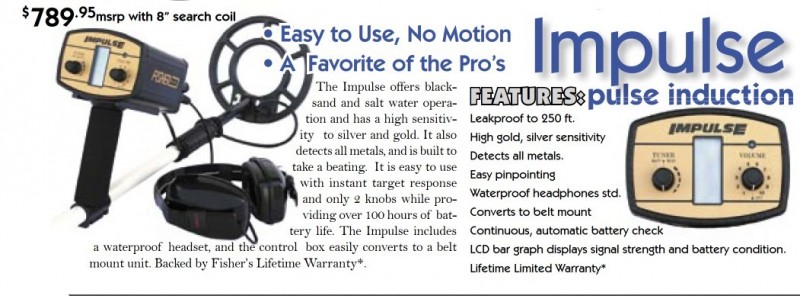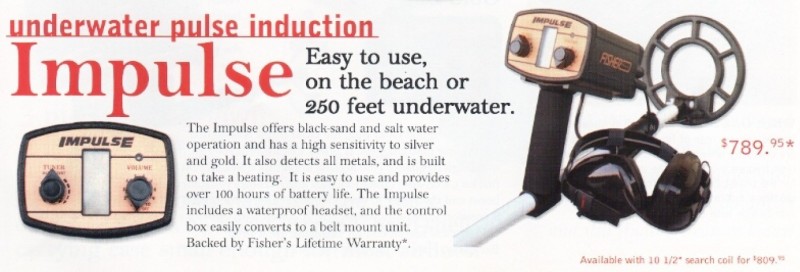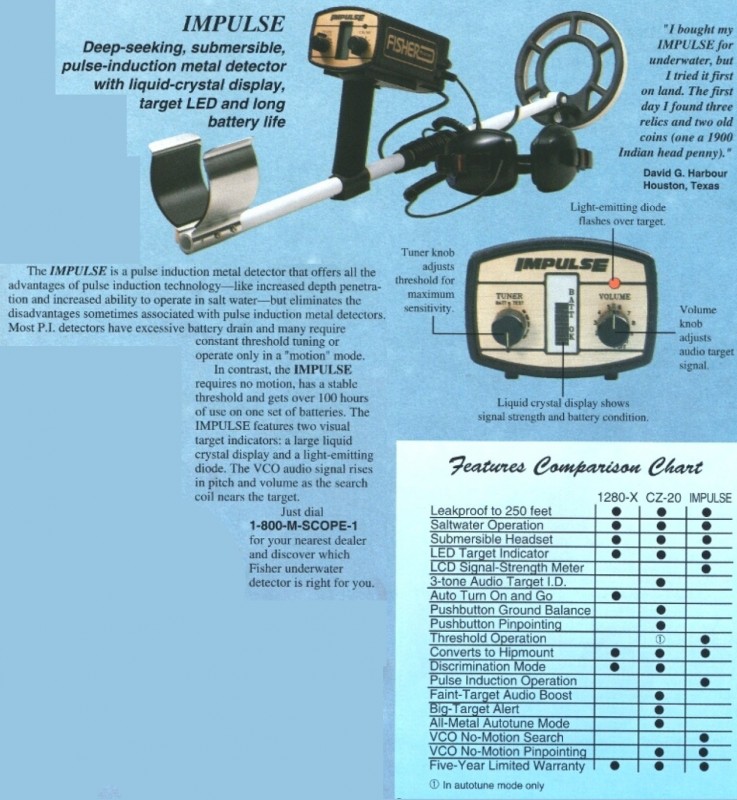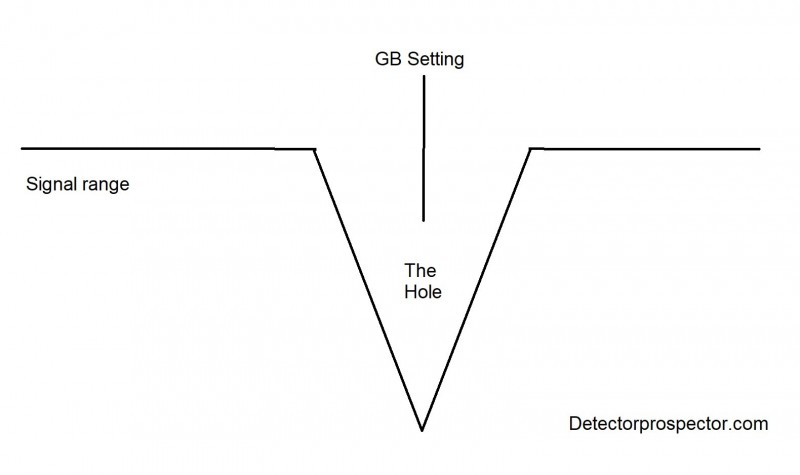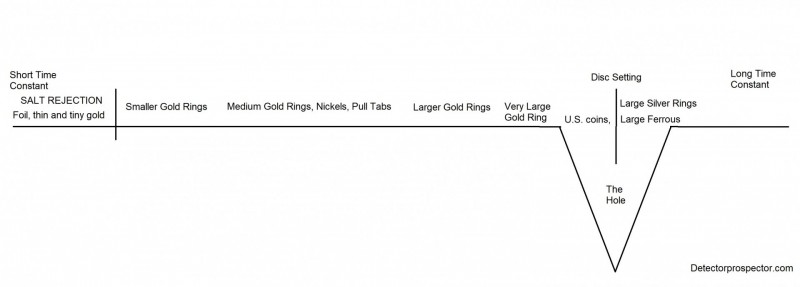Search the Community
Showing results for tags 'detector tech'.
-
Hello All, I am new to metal detecting and looking for some advice. Metal detecting is something I've always wanted to pursue as a hobby, but just never really committed to making the investment. I have a few detectors in mind Minelab Equinox 800 or 600 and Garrett GTI 2500 also open to suggestions but those three seems like decent choices for intermediate. My question is how deep can a standard metal detector detect? There's a bit of backstory here but as a kid, I watched the movie Encino Man. For those unfamiliar the movie is about two teenage friends digging a hole in their backyard for a swimming pool. Hilarity ensues when they unearth an ice-age caveman the rest of the movie is a little fuzzy, but they acclimate their new friend to the modern world. Anyway, after watching this movie I convinced my mom to let us dig a giant hole in the backyard! For some reason she agreed. Probably because it kept us busy and out of the house. So flash forward a bit we have a decent sized hole dug in my backyard. Keep in mind I'm 9-10yrs old (so things seem much larger) but as I remember it the hole was at least 8ft x 5ft and probably 3-4ft deep. This was how I spent my summer vacation, everyday I would go outside and just dig! Then, one morning I hit something! Excited, I ran into the house to inform my mom. What I hit was the side of a metal trashcan. The sort of trashcan Oscar the Grouch lived in on Sesame Street. The can was buried sideways and I brushed away enough dirt to tell it was trashcan but the can was still completely buried. My mom freaked out and forced us to fill the hole (whatever was buried that deep was not meant to be dug up!) After 25yrs the house is now mine and the thought of what could be buried there still intrigues me (hundreds of gold bars perhaps 🤔). The home was constructed in 1940, but built on the property of another home which was constructed much earlier probably 1910s. The older home has been destroyed for years and was demolished to built 8 townhouses/condos. However, the old lady who lived there had been in the house since birth and died at age 98. The townhouses/condos were built in 2007 which suggest a 1910 or earlier date for that home. The old woman did tell us about the area when before all the countless other homes were here. How you could see in any direction for miles. Now you need a drone for that and its nothing but developed land for 50-60 miles in all directions. If I had to guess a date for the trash can 1930s era would seem to align well. The short version, there's a metal trashcan in my backyard that I would like to relocate and excavate. However, I am not sure how deep the object actually is at most I would guess its 3ft to maybe 3.5ft. Could a metal detector locate a large object at this depth? I've been searching online for an answer to this question but cannot find any conclusive information. From what I can gather the detect-ability of an object varies considerable and seems based on the objects size. Most coins, for example, are fairly small and anything beyond 30cm (1ft) is probably on the edge of not registering a signal? However, if the object is larger the detectable depth will increase? So if you're searching for a pirate style treasure chest it could be buried much deeper and still be detected.
-
Prompted by one of Abenson's recent posts (including link and discussions on Monte's site) I decided to BYO and do some testing myself. Here's my build: Template on the left. That came from Monte's .pdf. I'm pretty sure my printer got the scale correct. I will point out that 20d nails (the big ones) have a length tolerance of +/- 3/32" (+/- 2.4 mm) and Monte's appear to be on the low tolerance end with mine on the high end, but hopefully that doesn't matter much if at all. My board is 1/2" plywood and the two coin recesses have USA small cent diameter. Nails are epoxied in place, slightly (~1 mm) recessed. I've read Monte's document 3 times and still have some questions/uncertainties which have led to this post. My first question probably has an obvious answer given that (from his document) he created this test based upon an actual ghost town site discovery with these locations of nails and an Indian Head Penny at coin location #1 (center). My question is: how close to the board are you supposed to swing the coil? I took the board outside for my first test -- no coins at all to get a baseline. Minelab Equinox 800, 11" coil, EMI canceled, ground balanced, Park 1 custom 5 tones, Recovery Speed = 5, Iron Bias F2 = 0, sensitivity/gain = 17, no discrimination (i.e. no channels notched out). Swinging as close to the board as I could get I heard non-ferrous signals from one or two directions. I could 'cheat' and look at digital TID's, but from what I've read this is supposed to be an audio only test. So how do I proceed and determine (once I put a coin on the board) if I'm hearing the coin or the falsing nail signals? I don't think simply creating a threshold to eliminate the nail falsing is a reasonable solution in this case (as you would do for an analog detector such as an early Tesoro, from what I understand). I could be wrong on that, of course. Again, I didn't look at the digital TID, but my lowest channel (including ferrous) ends at +5 and it was above that.
-
The Accumulate, Average, and Fade controls exist on several White's models, having first been introduced on the White's Eagle Spectrum. The functions govern how the SignaGraph™ and SpectraGraph™ displays show targets and so are unique to White's detectors. These display controls are also used on the DFX and V models. This note appended to the Engineers Guide to the Spectrum XLT offers a basic explanation of what these controls are doing. The display controls are also covered on pages 45-46 of the XLT Users Guide (excerpted below). Spectrum XLT Engineering Note Using Spectrum XLT Modes: Accumulate, Average, and Fade by Mark Rowan Although the SignaGraph™ display format has been well received, there seems to be some confusion regarding the option (average accumulate, and fade) and how to use them. Perhaps a more detailed explanation is called for. The default (preset) condition is Accumulate/Average/Fade, the fade rate being fairly slow. With each sweep over the target, several attempts are made to assign it a V.D.I. number. Each reading (There may be only one or two, or as many as six or eight readings per sweep) is reported to the user as a vertical bar on the SignaGraph™. (NOTE: If all eight readings are the same, the user will only see one bar). In Accumulate mode, these bars are not "cleared out or "blanked" on subsequent sweeps, but continue to "build up" in the display so that the user sees the entire history of multiple passes over the target. Squeezing the trigger will clear the display if it gets too cluttered, or if the user chooses to move to a different target with those of the second one. However, continually having to squeeze the trigger can be a nuisance -- this is where Fade comes in. If a certain period of time elapses with no new target responses, the vertical bars will be shortened by one increment. Eventually, they will disappear from the display. Notice, however, that if a new response comes along quickly enough, the Fade timer is reset (this is necessary to prevent readings from beginning to fade before the user has even had time to see them). Thus, if the Fade rate is slow and the user is sweeping the loop fairly quickly, no fading will occur until he stops swinging the loop or moves away from the target If he is working a trashy area or has his sensitivity cranked up to the noise threshold, the Fade out may be disabled entirely. This is the justification for the Fade Rate control. If the fade rate is increased, the user can find a level at which Fading will reliably occur, but which is not too fast for his personal taste or his style of hunting. If the Accumulate control is turned off the instrument is in the "single sweep" mode. Each sweep of the loop causes the display to be cleared, and only those readings made during the current pass over the target to be shown. The primary advantage of this is that it reduces the chance for readings from two different targets to be confused with each other. If the Fade rate is set to 0, fading is disabled and display bars will remain indefinitely. Average mode is entirely different than either the Accumulate or "single-sweep" mode of operation. When Averaging is turned off (the default in all preset programs have Averaging on) the vertical height of the display bar is an indication of the strength of the signal when that reading was taken. With Averaging, however, the height of the bar represents a running total of the number of readings that have occurred at that point on the display. For example, if you pass the loop several times over a gold ring and get readings of 1, 10, 40, 10, 10, -20, and 10, the display will show a tall bar at the place corresponding to 10 on the display, and very short bars at the positions corresponding to -10, 0, and 40. If the count exceeds the vertical resolution of the display, the bar remains at its maximum height and all other bars in the display are reduced by one increment, eventually disappearing from the display. The usefulness of this is that if the error in the V.D.I. readings is random (such as that caused by electromagnetic interference or irregular loop motion), it will eventually average out and the display will "lock on", showing a single prominent segment at the correct point on the display. Unfortunately, there is a catch. Iron and foil targets which mimic coins will also appear to "lock on"; the smearing one would normally expect will be suppressed somewhat. However, in the hands of a skilled user this should be a very useful feature. Mark Rowan was a Senior Engineer for White's Electronics, Inc. Mark holds degrees in General Science, and Electronics Engineering Technology, and is a graduate of the University of Oregon. His background includes satellite communications and RF test and measurement instrumentation.
-
I am a big fan of the White's SignaGraph display. A version 1.0 was originally developed for the Eagle Spectrum. The Eagle Spectrum underwent a complete hardware revamp, and was renamed the Spectrum XLT. A more refined version 1.1 of the software was matched up in the XLT with a much better LCD display. The SignaGraph was also used on the DFX, and was largely the same as on the XLT, with the addition of multifrequency options. The SignaGraph was later greatly enhanced on the V models (Vision, V3, V3i, VX3) and renamed the SpectraGraph. The genius of the SignaGraph/SpectraGraph is the ability to display multiple target id numbers at the same time, and even to choose how the target id number is determined. Here is the SignaGraph explained by its designer, engineer Mark Rowan. More details can be gleaned from the White's XLT User Guide. Spectrum XLT Engineering Note The SignaGraph™ "Phase Spectrum Analyzer" by Mark Rowan Some time ago, I had a conversation with an avid treasure hunter whose instrument of choice was White's Eagle II SL 90. He described to me a technique with which he could discern pull tabs from rings, nickels, and other desirable targets by listening for some subtlety in the audio response. Then he asked me, "If I can do this, why can't you program the Eagle's microprocessor to do it?" My response was, "If you can do it yourself, why would you want the microprocessor to do it for you?" I mention this as a means of illustrating what I consider to be the metal detector designer's fundamental dilemma, which is, as Prince Hamlet might have phrased it, "To beep or not to beep". More specifically, if you're faced with a target at some depth in badly mineralized ground and the detector has a hard time getting a solid reading on it, what do you do? If you design your detector to ignore the target, and then someone comes along with their El Cheapo brand detector and digs the target, which just happens to be a $10 gold piece -- you're in big trouble. If, on the other hand, your customers find that they're spending most of their time chiseling through eight inches of hardpan and finding bent nails and wads of aluminum foil, you're not much better off. The point I was trying to make with the gentleman who had devised the clever pull tab discriminating scheme was, that if you put too much of that kind of "intelligence" into your metal detector, there are always going to be those targets that you miss because the machine got fooled. Which brings me, of course, to the newest White's model, the Spectrum XLT. The Spectrum XLT has all of the features, performance, and flexibility of previous members of the Eagle series, plus a new display which makes the instrument remarkably easy to use. It also makes use of a new way of displaying information about targets -- the "SignaGraph™ or "Phase Spectrum Analyzer" -- which shows the operator everything that we currently know how to display about the characteristics of metallic objects in the ground. In this way, we have gone a long way towards addressing the dilemma I mentioned earlier. The Spectrum XLT is a very "smart" detector, but it is also an "honest" one. Having done the best it can to determine the probable identity of a target, the Spectrum XLT gives you all of the information you need to make your own decision (human beings are, despite what you might have heard, still a whole lot smarter than computers) to dig, or not to dig. Before I begin to describe in some detail what the SignaGraph™ is and how it works, I should emphasize that you don't need to know how it works in order to use it effectively, and that the best way to learn how to use it.... is in the field. In a very short time you will begin to recognize certain display patterns as being characteristic of certain types of targets. I should also point out that even if you ignore the SignaGraph™ altogether, this instrument still has the audio discriminator, V.D.I. number, that its predecessors had, plus the icons, and some significant improvements in terms of weight, physical size, and ease of operation. White's SignaGraph display For many years, White's has built detectors which identify targets based on a V.D.I. number (V.D.I. stands for Visual Discrimination Indicator) which characterizes metallic objects according to their size, shape, and composition. The V.D.I. scale on the Spectrum XLT runs from -95 to +95. Large positive numbers typically indicate objects which are good electrical conductors; for example, silver dollars will come in at 92. Smaller positive numbers usually indicate objects which, because of their size, shape, or composition, are not as conductive; nickels will read about 20 and aluminum foil may come in near 5. Large negative numbers are typical of targets which are readily magnetized, but which conduct electricity poorly or not at all. Some sands or soils which have a high concentration of ferromagnetic minerals may read -93. Metals containing iron have both magnetic and conductive properties, which causes them to spread over a wide area of the scale, although most typically iron objects will fall in the range -30 to -75. The V.D.I. reading is an excellent way to determine the identity of most commonly occurring targets, although I might mention in passing that the only 100% reliable discriminator is called a shovel. However, as a famous metal detector engineer once said, "Life is grossly unfair" (actually, there is no such thing as a famous metal detector engineer, and life really is fair, it just doesn't want anybody to know). For one thing, the signal which a detector receives back from even moderately mineralized ground is typically much stronger than the signal it receives from the targets buried in it. This makes determining an accurate V.D.I. number for a target at any substantial depth a very challenging business indeed. Furthermore, some targets will cause an abrupt change in V.D.I. response during the course of a single pass under the loop; the most notorious of these are the dreaded bottlecap and the dreaded small piece of foil near the surface in bad ground. Enter, as they say, the Spectrum XLT. The SignaGraph™ is very similar in some respects to the familiar analog V.D.I. meter. The display is calibrated from left to right in V.D.I. units, from -95 to +95. When the loop is passed over a target, a V.D.I. determination is made, and a vertical bar is placed at the appropriate place on the scale; near the right end of the scale, say, for a reading of 78. So far, this is just what an analog V.D.I. meter would do. At this point, the similarity ends. An analog meter can indicate only one value at a time; with the SignaGraph™, up to 30 readings can be displayed simultaneously. Also, the vertical height of the bars in the display has significance; the height can either be used to indicate signal strength or a running total of the number of readings at that point on the scale ( the operator may choose which of these two indications is to be used). The advantage of this type of display format becomes evident when the loop is passed over a bottlecap or some other flat, thin iron object. Although the instrument may respond with a loud, clear audio output, and the V.D.I. readout may register a value near the upper end, the SignaGraph™ will tend to "smear out"; numerous segments will appear throughout the display, many or most of them in the negative (typically iron) range. Try the same things with a coin, and you won't see the "smear"; typically you will see 1-3 bars grouped closely together near the top end of the scale. If any smearing does occur, as it might on a deep coin in bad ground, the more accurate readings will stand taller in the display and will tend to persist from sweep to sweep. Another unique advantage of the Spectrum XLT is the ability to make use of information gathered during the course of multiple sweeps of the loop. For years, clever detectorists have realized that by passing the loop over the target repeatedly and mentally keeping track of the range over which readings appear, and the most frequently occurring numbers within that range, they can achieve the highest possible accuracy on really tough targets. The Spectrum XLT performs this operation automatically. The standard mode of operation is the so-called "Graph Averaging" mode, in which a continuous count is kept of the number of readings that fall into a particular slot in the graph. This might also be a good time to mention that more than one V.D.I. determination is made during the course of a sweep; sometimes as many as 6 or 8 readings will be taken during a single pass, so it only takes a couple of sweeps for the effect of averaging to become significant. What you will see in the field will be a single bar on the display which will "grow" until it stands out prominently above the other bars on the display. Although it is not necessary to adjust them, there are a number of controls that allow you to customize the way that the graph is displayed. It can be set up to clear itself on each sweep of the loop, if you find that too much information is persisting in the display for too long. Or, you can configure it to let the vertical bars fade slowly out of view. Even the rate at which this fading takes place is adjustable. If you don't want to be bothered with any of that, then don't be. The factory preset settings should work just fine for almost anyone. For those of you who want to know an explanation of Accumulate, Average, and Fade, one is included in this Guide. If all of this sounds confusing or mysterious to you, allow me to put your mind at ease. The Spectrum XLT is one of the simplest-to-operate detectors you will ever use. I shall describe just how and why it is so easy to use momentarily; but before I finish talking about the SignaGraph™, I want to say it one more time-- you don't need to be a Nobel Prize candidate to figure out what the display is telling you. The usual response from somebody seeing it for the first time is something like: "Okay, I get it now. Now leave me alone and let me hunt!" What is it that makes the Spectrum XLT so easy to use? The key is something that is known in the software business as a "menu-driven interface". To implement that, we have used what is known in the display business as "A True Graphics Display". What all of this means to you, the user, is that all of the controls and options are listed clearly in plain English on the display. A flashing arrow appears on the screen next to one of those options; you can move the arrow up or down with the two "arrow" keys on the 5-key touchpad. When the arrow is next to the control you are interested in, you push the ENTER key. That is everything you need to know to run this machine. If you are like me and you hate reading instruction manuals, I believe I can safely guarantee that you will be able to operate the Spectrum XLT successfully your first time out without ever having to open the cover -- although the manual should be extremely helpful if you want to fine-tune the performance of your detector by adjusting any or all of a rather lengthy list of professional options. Incidentally, another name for this method of running a machine is the "point-and-shoot" method; you point at what you want, then "shoot" with the ENTER key to make it happen. Finally, for those in a hurry, there are a number of "shortcuts" designed to make accessing commonly used features as fast as possible. What makes the Spectrum XLT even easier to use are the factory preset programs (like those in previous Eagles) which you can load with just a few simple keystrokes, following the prompts in the display. These programs configure the machine automatically so that the beginner or casual treasure hunter can expect a great deal of success over a broad range of conditions. Any attempt on my part to detail all of the advanced features and controls which the Spectrum XLT has to offer would probably leave me with blisters on both of my typing fingers. Suffice it to say that all of the features we have had in previous state-of-the-art detectors are here in this one, plus several new ones. Most of the features are there because somebody asked for them -- the moral of the story being, keep those cards and letters coming, and we will continue trying our best to give you the kind of detector you really want. Mark Rowan was a Senior Engineer for White's Electronics, Inc. Mark holds degrees in General Science, and Electronics Engineering Technology, and is a graduate of the University of Oregon. His background includes satellite communications and RF test and measurement instrumentation. White's SignaGraph examples from Spectrum XLT manual
-
I know there's already a bunch of stuff written on iron masking. But there might be some new readers that could benefit. Over on Monte's forum I started a discussion on iron masking didn't get a lot of response but Monte did write some very informative responses if you want to visit the topic on his site it's under the relic/old site hunting section. Here's the video. Would love any additional comments on the subject if anyone would like to interject. I'm no expert and certainly don't know everything about every metal detector out there so I'm open to any constructive criticism or comments.
-
I’m sure I read somewhere that all of these common connectors (typically for headphones) such as the 8 pin style have a limited amount of mating cycles. Connector integrity cannot be assured after this. I guess there is a small amount of wear and tear on the male/female metal contact points as well as the plastic/rubber moulding that keeps water out. Any views on this? Thanks Tony
-
Out with the Minelab Equinox yesterday and getting frustrated with the difficulty of switching to the user 'profile' (plenty of complaints on that since its release) but then wondering why we have only one memory slot. Sure, many detectors have zero.... Are there detectors on the market (or even from the past -- no longer manufacturered) that have more than one user memory slot? It's hard to believe in 2020 with gigabytes of memory in so many small packages/products that we can't have 2 or (am I asking for too much?) 4 places to put user custom set search modes.
-
Might be a silly question, but I can't find the answer. Seems like all the lower end detectors are always around 5-8 khz. I was always under the impression that the sweet spot for the biggest target range was around 12-18 khz. Are the lower frequencies cheaper to implement, or is there another reason?
-
I tripped over this at the Minelab website: This posting, together with the label, also provides an indication of which Minelab products are protected under the Patents Act of various other countries. Product(s) US Patent Number Australian Patent Number GPZ 7000 6636044 783737 7310586 8106770 2011200515 D686924 342365 (Design) 2009262370 2012101855 9547065 2013201330 GPX 4500, GPX 4800, GPX 5000 2011200516 8106770 2011200515 6636044 783737 SDC 2300 2011200516 8106770 2011200515 6636044 783737 D652330 9829598 2014274608 9547065 2013201330 Gold Monster 1000 7432715 2005276953 CTX 3030 7310586 D686924 342365 (Design) 8854043 2013201248 9239400 2013200451 E-TRAC 7310586 X-TERRA 305, X-TERRA 505, X-TERRA 705, X-TERRA 705 Gold Pack, X-TERRA 705 Dual Pack 7432715 2005276953 EQUINOX 600, EQUINOX 800 7432715 2005276953 7579839 9366779 2014218372 Vanquish 340, Vanquish 440, Vanquish 540, Vanquish 540 Pro-Pack 7432715 2005276953 7579839 9366779 2014218372 GO-FIND 20, GO-FIND 40, GO-FIND 60 GO-FIND 22, GO-FIND 44, GO-FIND 66 7432715 2005276953 D756247 360432 (Design) 9557390 7310586 National Geographic Pro Series Metal Detector 7432715 2005276953 D756247 360432 (Design) 9557390 7310586 AN/PSS-14 6636044 783737 F3, F3 L, FE S, F3 LS, F3 UXO, F3 Compact 7310586 6636044 783737 F3 Compact D652330 F3Ci 7432715 2005276953 D652330 STMR Array 6636044 783737 7310586 MDS-10 7432715 2005276953 7579839 9366779 2014218372 Other patents that may apply to the above products 7474102 7652477 7791345 8063777 8237560 8614576 2007272230 9250348 9348053 2017279664 9429674 2014218370 10078148 2014268189
-
Most of the sites I hunt have very mild ground. I typically leave my GB at 0 most of the time. When I do take the time to Ground Balance, I usually get single digits with occasional numbers in the teens. Do the GB numbers reflect the levels of mineralization in the soil? Do soils with high mineralization have higher numbers? The manual says nothing about it.
-
Here’s a topic for all you “Rocket Scientists” out there (and anyone else who’d like to chime in). I was having a discussion with another dealer. He felt that single frequency worked better because there’s a certain amount of performance loss with Multi. I was always of the opinion that Multi-Frequency was the best for most types of Metal Detecting. It allows you to hit ALL the targets that react better to certain kHz. Here’s an example from another hobby of mine (most of us have more than one). I shoot muzzle loading guns. The “Round Ball” type projectile that was used for hundreds of years performs best when shot out of a rifled barrel with a slow twist. Twist refers to the how many inches of flight it (the projectile) takes to make one revolution. The conical bullet came out during the Civil War and requires a faster twist. For modern muzzle loading rifles a slow twist would be 1 turn in 56, 60, 66, 70, etc. inches. For conicals, 32, 28, 24, etc. inches. In the 70s, one company came up with the idea of a “Compromise” twist; 1 tun in 48”. That way you only have to buy one gun. You can use Round Balls for Target shooting and Conicals for hunting. It shoots both “well”. Having said all that, does the Single Frequency work better than the Multi? Is there any kind of lack of performance or trade off having them (kHz) work simultaneously? Thanks! Walt
-
Most people act like it’s all about depth. This machine versus that machine.... which is deeper? In my experience for some things max depth does matter. Like gold prospecting. Get a GPX 5000 or GPZ 7000 and dig. Or beach detecting or relic detecting with PI detectors. If depth really was all that mattered, everyone would use a PI. But we do not. Not even the gold prospectors and beach hunter. To state the obvious, not everyone can afford a GPZ 7000 or has access to ground where it will pay off. For some people, a Gold Bug 2 makes more sense. And not all of us are physically capable of digging deep holes for junk all day... we need to narrow the odds. Even if that means giving up depth. VLF tends to be about discrimination, but again all it seems we hear about is depth. But what kind of depth? Depth with good discrimination? How good? I am very cognizant when running a VLF that I’m not running a detector that gets max depth. That being the case, ergonomics and audio matter a lot to me. How it feels on my arm, and sounds to my ear. If I hate the sounds a detector makes I’m not going to enjoy things as much. Frankly, I can make up for a little less depth by just finding better sites or hunting longer hours, if that means having a detector I enjoy using. I say depth is not everything when it comes to VLF detectors. Important, yes, but it perhaps it should not be the sole criteria for most people. What say you?
-
Of all the different types of metal detectors, the two box is the oldest(?) but also one of the least used. Defintitely a detector for special situations, but with a couple possible exceptions, for the proper situation it's the best choice for the job. I'm aware of two standalone models still available new -- Fisher Gemini-3 and White's TM808. Garrett's Treasure Hound (see P. 43 of their latest catalog) and apparently a new kid on the block are attachments for specific standard (control unit + shaft + single coil housing) detectors. In particular what has me wondering (and confused) is the fact that the Gemini-3, operating at 81.92 kHz doesn't appear to have a gound balancing adjustment but the TM808 (6.5 kHz) does. I was under the (naive?) impression that low frequencies are less susceptible to ground mineralization but here it seems in practice, it's just the opposite. Any thoughts/explanations?
- 10 replies
-
- detector tech
- fisher detector
-
(and 1 more)
Tagged with:
-
I hope this topic hasn't already been covered and I'm not writing it in the wrong place. Recently, based on my lack of knowledge in this sector, I have however noticed large differences in actual life, not only because of battery chemistry ... I mean something about the use of power itself in using the tool. Thinking of a mobile phone, the standby time is merely relative to the battery capacity, as is the duration in call or video call, much less long ... So every time a detector is used in an area where there are several signals and we are busy digging or at least hearing many of them, the battery duration is more affected and reduced... This for me, as an inexperienced, means not being able to have a clear measure of the actual duration of the battery pack ... You can never know regardless of how many signals will pass below the coil ... So I then discovered the natural drop in voltage, added to that of absorption in the most arduous use ... And what about threshold instability and false signals if, for example, a pulse is not properly regulated and a too low delay makes it continuously sound for nothing by activating the retuning? At this point I have the impression that even with higher capacities, the voltage drop is the most difficult factor to defeat, even before the capacity .... I am facing the insertion of bms modules in these days and in the future I could add step up or step down modules if necessary, but first I would like to understand to what extent it is possible to delay the cut off, if not eliminating some form of protection that these boards cut away leaving a lot of useful voltage. Unprotected batteries can have a bad end if it is lithium, so there is a compromise between safety and durability ... I repeat again ... I am not an expert and anyone who can add his knowledge on the subject, do it without brakes because I am well open to constructive technical comments, or even comic and bad ...
-
Hi, I am new to the forum. Anyone have any experience with this brand of detectors ? https://uigdetectors.com/en/gold-and-metal-detectors I am thinking of buying a Minelab SDC 2300, but in my internet search last night, I came across this brand I have never heard of called UIG detectors. Looks like they have some interesting looking detector technology. Before I drop money on an SDC 2300, I want to make sure I consider the competition as there may be other reliable and fun technology to experiment with.
-
-
Those impressive video results of the Fisher Impulse AQ with its 12.5” mono coil on the 10K Gold ring at 17”-18” and 14K Gold ring at 19”-20” as did a 22K Gold ring drove my curiousity to air test two Gold rings using a QED in its Beach Mode-11 operating at its pulse delay of 7.5uS with a NF 12” Advantage mono coil. For my test, the QED’s settings were Threshold-B at 5 below Null and Factory Default for Threshold-A at 30 and Gain at 1. (Threshold-A settings range from a 1 up to 90 and the Gain settings range from 1 up to 10} The results for a clear response on a 3.04-gram 9K 21mm diameter Gold ring was 17” and on a 2.05-gram 18K 19mm diameter Gold ring was 16”. I have no idea how a QED using its Beach Mode would operate within a Beach environment and my intention is not to compare in anyway the QED to the Fisher Impulse AQ only results using a pulse delay of 7.5uS.
-
I had a guy approach me at the lake today who lost a 14K college class ring size 11. I told him I would spend time looking for it and get it back to him if I happen to recover it. I have a 10K college class ring I found this year(unable to locate owner) but, it's a 10K. On the Simplex, it reads 64-65, the Nox hits at 20-21 I'm wondering how much of a difference the 14K will read. Any help would be appreciated. Thanks.
-
Hand held backscatter xray. I want one. https://www.dael.com/assets/files/Documenten/hbi-viken-sec2.pdf HH Mike
-
What do you make of this description on KellyCo? It seems to suggest the IPTU sensor would work with machines other than the Invenio. Does anyone know if that is true and how that would work? "One of the biggest issues that people run into when metal detecting is difficulty with accuracy. The IPTU Sensor (Invenio) is going to help increase your accuracy and help you find more items and be sure what they are and where they are better. This is an easy to install sensor and is going to make a world of difference when it comes to your overall success when metal detecting. This sensor works with Invenio detectors and is a great addition to any metal detector." https://www.kellycodetectors.com/catalog/iptu-sensor-for-invenio
-
The original 1985 Fisher Impulse metal detector A note on saltwater. On dry land and in freshwater pulse induction (PI) detectors can be run to max limits. Not so in saltwater. There is an inherent limiting factor in saltwater that tends to flatten top end performance on all PI detectors, or even VLF detectors for that matter. The problem is simple - saltwater is conductive and so is visible to electromagnetic devices like metal detectors. Pulse induction detectors saw their earliest use as beach detectors because of the pulse delay control. Lower pulse delays expose items with a shorter time constant, and this usually means low conductive and/or small items. As the pulse delay increases a PI loses overall sensitivity. Early beach PI detectors all came with a preset, relatively high pulse delay that made saltwater invisible to the detector. In general somewhere around a pulse delay of 10 uS saltwater becomes visible to a PI detector. The number varies for several reasons, First, salinity varies greatly around the world, everything from salt free fresh water, all the way to the Great Salt Lake, which is water supersaturated with salt. Oceans and bays vary, and especially bays that have large river inflows, and therefore lower salinity levels. Large, shallow, enclosed bays with no rivers may act as evaporation dishes, and have abnormally high salinity levels. Further, this effect is accentuated the deeper you take a detector, and so detectors used for true SCUBA diving must be run at higher delay levels at depth. You can't just pick a number like 10 uS and say that is the magic number for dealing with saltwater. 9 uS may work well, or it may take 12 uS to eliminate feedback from the saltwater in your location. The coil detects like a globe in all directions, and so it is not just the water under the coil, but all around the coil that is affecting it. This large ball of saltwater is like a giant target. Many hunters riding the edge of sensitivity can tell you a detector can pick up waves as they pass over, making the water deeper. This long winded explanation is to make people realize that you can't just magically make the detector itself more powerful and get "more depth" or "more sensitivity." The salt range overlaps the tiny gold range, and so if you make a detector able to detect fine gold chains and tiny gold ear rings, it will detect the saltwater. If your set the pulse delay to eliminate the salt signal, you lose the tiny gold items. This is an inherent wall on both PI and VLF small gold performance in saltwater. We have had detectors for decades that can detect tiny gold that people say they want to detect in saltwater, the Fisher Gold Bug 2 for instance. The problem is the Gold Bug 2 will not work in a saltwater environment. The water is just a huge signal to a Gold Bug 2. I have gone round and round with people for the last twenty years trying to explain why you can't detect certain fine gold chains, small ear rings, small platinum, etc. in saltwater. The problem is not the detectors - it is the saltwater. The same problem exists to some degree on trying to detect larger items. You can make a very powerful detector, but you have to inhibit the detection of saltwater, and this tends to put a ceiling on the maximum attainable performance in saltwater. No matter the machine you use, once you hit the saltwater you can only advance the pulse delay and sensitivity controls to a certain point before the detector starts to protest. The exact settings where this occurs will vary by location. This all assumes "no mineral" sand. Add magnetic soil content to the beach or bottom being hunted, and you have yet another limiting factor to contend with. Add this all up and do not expect to run the Impulse AQ Limited at a pulse delay of 7 Us and maximum sensitivity in a typical saltwater environment. You will likely have to lower one or the other or both settings to get stable performance, and this requirement tends to be a limiting factor on all PI performance in saltwater. It is this knowledge that keeps me from ever expecting miracles to occur when I try new detectors in saltwater environment. The problem is not the detectors - it is the saltwater. The original 1985 Fisher Impulse metal detector
-
I have seen it said a few times now that the new Fisher Impulse AQ has "no holes". This started as a very specific mention on the part of the designer, and now has been expanded into a range of assumptions that do not match how I view the subject. First, what is a "hole?" The classic definition originated around ground balancing pulse induction metal detectors. The first and most simple ground balance method is a basic subtraction. Determine where the ground is reading with the detector, then provide a control to subtract that signal. Many people do not realize that ground signals and gold nugget signals within normal range are basically infinite and overlap 100%. This is due to the nature of natural gold nuggets, which occur in endless variety as far as size, shape, and composition. When added to the ground, they mix and blend with the ground signal, and in one way can be considered a naturally occurring component of a ground signal. There is one simple rule you must keep in mind that makes all discussions of a "hole" simple. For every potential ground signal that exists, there is also a corresponding gold signal. The ground balance control is just a special discrimination control. When you eliminate any one type of ground signal or hot rock, you automatically eliminate any gold signals that are identical to those ground and hot rock signals. The nature of the electronics involved is not 100% in that the ground balance rejection point is not perfectly sharp edged, but covers a small range. Within this rejected ground range, you have the most intense rejection effect at the setting itself. However, items that fall close to the setting, while not eliminated, are weakened, and deliver less than normal depth. The effect is similar to that seen when black holes are diagrammed, and targets that are unintentionally eliminated because they fall into this range are said to "fall into the hole." The classic metal detector ground balance "hole" This can also be seen with many VLF detectors. Take a detector with a manual ground balance control, and grab a coin. Air test the coin depth, while running the ground balance control to both extremes. Depending on the coin or target you test, like a gold ring, you will usually find that the depth varies with the ground balance setting. On a simple ground balance detector with a single ground balance "channel" the effect is quite pronounced. On the White's TDI the ground balance setting is normally around 8. This also corresponds with nuggets weighing approximately 1/4 ounce, though again, because of the natural variation of gold nuggets, the range is actually very large, and based on the time constant of the nugget, not any particular weight. Any nugget that reads at the setting of 8 is essentially eliminated. Nuggets that fall near to the setting have greatly weakened responses. Minelab first addressed this issue with detectors that have two ground balance "channels". Channels have historically referred to detectors that have two separate ground balance "channels" but people are now misusing the term to refer to detectors that are returning dual audio results that can be separated into "channels." This is not the same thing. A dual channel PI has two ground balance sample points that are being compared. The Minelab SD 2100 has a switch that lets one chose one or the other or both ground balance channels. One favors long time constant targets (large nuggets) and the other short time constant targets (small nuggets). The ground result is roughly the same on either channel. By comparing and combining results from the two channels, emphasizing the one with the strongest nugget signal, the "hole" is largely eliminated. This was the major advance and secret to Minelab PI MPS "multi-period sensing" detector technology. The "timings" developed over time were progressively sophisticated comparisons of multiple channel results intended to address specific ground and hot rock situations. No matter what though, the hole never goes away entirely. If you eliminate a certain hot rock, you lose gold that reads like that hot rock. People who set for and are willing to dig what others consider ground and hot rock noises, find targets with PI detectors that others miss. It's one of the secrets of the pros. At a minimum, on Minelab detectors, hunting with a different timing will reveal gold missed with another timing. To sum up, a hole in metal detector terms is what occurs when a good item is unintentionally rejected when some undesired item is rejected or discriminated. This usually refers to good items lost due to the ground balance setting, but can include any items accidentally rejected due to a detector eliminating some undesired target or range of targets. And that brings us to the new Fisher Impulse AQ and the claim of "no holes." As in all marketing claims, yes.... and no. Alexandre Tartar has be quite firm since day one in emphasizing that the AQ is specifically designed to find gold ring range targets to the exclusion of everything else. In his early writings he says that the AQ does focus on this range, and that in that defined gold ring range there are no holes. This is true. Unfortunately that statement has been extrapolated beyond the original intent. It all depends on how you want to define things. I am going with the definition above "a hole in metal detector terms is what occurs when a good item is unintentionally rejected when some undesired item is rejected or discriminated." Under that definition the Impulse AQ has two holes. They have simply been redefined as not being holes, but being something else. The ground balance control has been hijacked on the AQ and is employed as a discrimination control. Instead of being set to reject a certain ground signal, it is being used to reject a certain target range, specifically many ferrous targets. In the process, most U.S. coins except nickels are also rejected. So we have called the ground balance a disc control, and are attempting to eliminate ferrous items. The unintentional side effect is that many high conductors including most U.S. coins are rejected. Note that if this setting is high enough, heavy large gold rings can be eliminated. The ground balance hole is there, and in a big way. We are going to define it out of existence however by calling it a discrimination control. The Volcanic Mode, by eliminating intense beach mineralization, will have an adverse effect on most targets. It has to. You can't eliminate a ground signal that severe without an unintended adverse effect. The Impulse AQ is also locked into salt rejection mode at all times, even in "all metal" mode. Well, almost all metal mode - I wish there was a switch to shut off the salt rejection. There is still a filter engaged, so this is not a pure pulse mode. The machine is always set to eliminate salt signal. This means that small gold items like thin gold chains, small ear rings, aluminum foil, and small gold nuggets, are also going to be unintentionally eliminated. You catching the drift here? Unintended side effects, trade offs deemed necessary to get a desired end deemed more important. Welcome to metal detecting. So we have another hole in the extreme low end, but we have redefined it as being a preset salt rejection mode. So does the Fisher Impulse AQ have "holes" in the detection pattern? It simply depends how you want to look at it. If you define the only genuine desired range of the detector as being a narrow range focused on gold rings, there are indeed no holes in that particular range. But if you consider the entire range of possible targets that can be found with a metal detector, the AQ is explicitly said to reject at least two target ranges of concern to some detectorists depending on the settings. It always is in salt rejection mode, and so will always miss low conductor targets. Engaging the disc mode will also lose many targets of interest to coin hunters. So are those holes or are they not? You decide. Fisher does not define the term anywhere to my knowledge. It can mean whatever they want it to mean. Leaving it undefined means people just plug in their own assumptions. Frankly, none of this should come as a shock or a surprise to people who have been paying attention. I in fact have already written a long article, the Fisher Impulse AQ Discrimination Explanation, that has put all this out there for anyone with ears to listen. I have concerns that the marketing folks seize on simple catchword phrases, that make nice blurbs for people who don't really understand the technology and the limitations. People read what they want into such statements, and this in turn creates unrealistic expectations. This inevitably blows back when disappointed customers feel they were mislead. Frankly, I have always believed in underselling a product and letting it prove itself. Setting up unrealistic expectations is a setup for failure in my opinion. Keeping expectations realistic results in pleasant surprises and better long term outcomes. My goal here is therefore not to knock the Impulse AQ, but to educate people into having realistic expectations. Will you buy this detector and just go dig rings while digging no junk? No, that is not going to happen. Read the article at the link above. Are there items that the AQ will not detect as an unintentional side effect of eliminating undesired signals. Absolutely. Finally, let's talk the upcoming Fisher Impulse Gold model. The Impulse AQ fails as a gold prospecting detector because the ground balance control is being employed as a discrimination control, and because the detector is locked in salt rejection mode. Obviously the salt rejection needs an ability to be turned off. I'd prefer this as a control so salt mode can be engaged on salt alkali ground in the desert, or for some hot rock rejection. It would be a shame to eliminate it entirely, but that may be their solution. If we had a switch for that on the AQ it would have been nice also for dry beach and fresh water use. In any event, salt rejection must be gone or optional on the Impulse Gold, or all that small gold the machine is designed to find is lost. The disc control has to go back to being a ground balance control. Discrimination capability outside of perhaps a dual tone effect common on ground balancing PI detectors will therefore be unlikely on the Impulse Gold. What also will happen with an adjustable ground balance will be the inevitable hole that follows with such a control, Fisher can minimize the hole as much as possible, but again, you can't reject a certain hot rock without losing the nugget that has the exact same time constant. The ultimate constraint on the kind of gold a PI detector can find has never been pulse delay. There are commercial PI detectors designed to find pin-sized targets. For gold prospecting the constraint is always the ground. If you make a detector with a 1 uS pulse delay, all it will do is light up the ground like the largest target ever found. The key is the ground balance technology employed, and how efficient it is at eliminating ground and hot rocks, plus alkali effects in some areas, while losing as few gold nuggets as possible. There is a point where making the pulse delay short enough basically duplicates what a high frequency VLF does, and it creates all the same problems with ground and hot rocks you get with a high frequency VLF. Short pulse delays and air testing is totally meaningless. The Impulse Gold will have to ground balance effectively, and doing that will bring its performance parameters into line at best, in my opinion, with the limits we have already seen explored for those who are familiar with and have used current available technology. The main low hanging fruit waiting to be picked here is high performance in a light weight, ergonomic, and affordable package. Anyone expecting massive improvements in existing gold prospecting technology probably does not understand the constraints involved, and is likely to be disappointed. My advice? Be realistic and look for a new benchmark for what a gold prospecting detector can do without breaking your wallet or your back, and you are going to be happy with the new Fisher Impulse Gold. That is how all this works folks, time constants. PI detectors know nothing about ground or gold or ferrous or non-ferrous. Conductivity is loosely involved if at all. You can accept targets and reject targets or ground based on their time constant, and for every good target there is a bad target that has an identical time constant, and vice versa. That is the reality of the technology, and getting your head around it is the key to knowing what these detectors can and cannot do. Does the Impulse AQ exhibit any detection “holes?” My answer is define first exactly what you mean when using the term, then apply that to the AQ to get your own answer. UNDERSTANDING THE PI METAL DETECTOR by Reg Sniff For anyone who wants to dispute any of the above, please provide an exact definition of what a “detection hole” is, and how it does or does not apply to the Fisher Impulse AQ.
-
Hello, I'm looking for detector that can detect up to 4 meters (~13 ft) with > 10 grams of gold on orchard ground I've bought "BR gold step" but it was useless now I'm looking on "minelab GPZ 7000" but I wanted to ask here if there it will be good one for my case or there is another choice my budget is 10,000$ PS: can I use GPZ 7000 with my gold step to get more accurate reads ?




